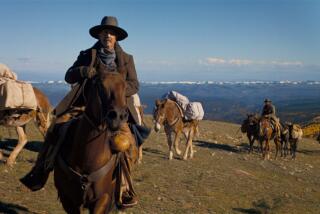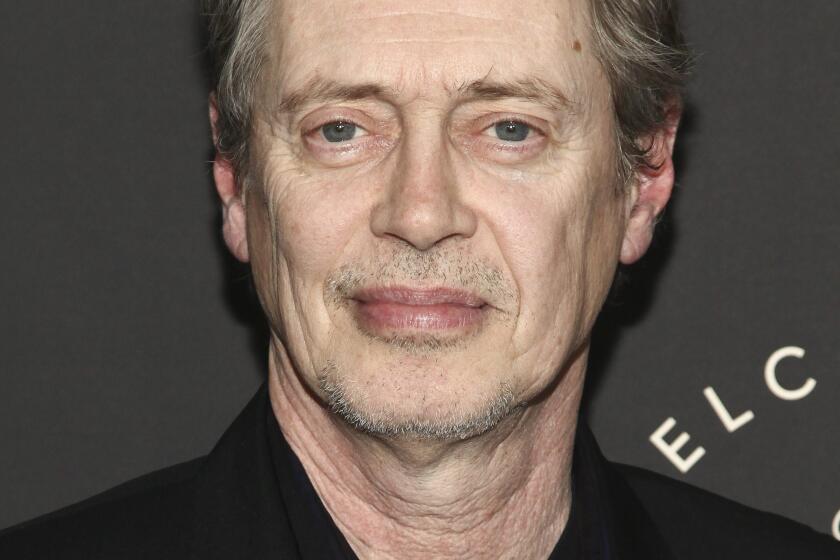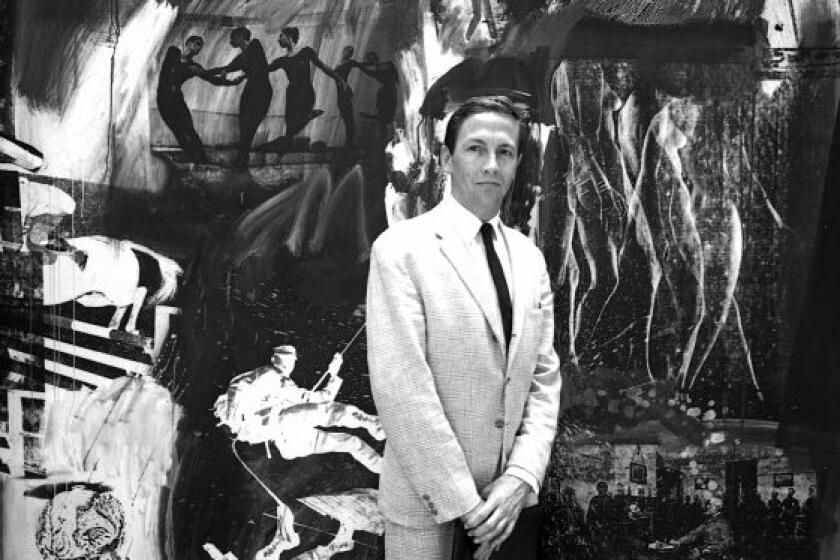OFF-CENTERPIECE : How About ‘I Love L.A.’ as Part of the New Soundtrack?
Though Hollywood is singing the blues over the dismal box office of some of its new releases, the industry has struck gold restoring and re-releasing such classics as George Cukor’s “A Star Is Born,” David Lean’s “Lawrence of Arabia,” Bernardo Bertolucci’s “1900” and Stanley Kubrick’s epic “Spartacus.”
While not exactly a member of that august company, director Ridley Scott’s own cut of his 1982 cult favorite “Blade Runner” has been unearthed by Warner Bros. and is headed for theaters.
For the record:
12:00 a.m. Sept. 15, 1991 For the Record
Los Angeles Times Sunday September 15, 1991 Home Edition Calendar Page 91 Calendar Desk 1 inches; 27 words Type of Material: Correction
Warner Bros. recently tested a 70-millimeter print of the original release version of 1982’s “Blade Runner” in Washington and Houston. It was incorrectly described in last Sunday’s Film Clips.
Scott’s cut already has been screened to SRO crowds at the Fairfax in May, 1990, and as part of UCLA’s Los Angeles Perspectives multimedia festival this past April. It opens a two-week engagement Sept. 27 at the Nuart Theatre in West Los Angeles.
The moody film noir/sci-fi thriller, based on Philip K. Dick’s “Do Androids Dream of Electric Sheep?,” stars Harrison Ford as a cynical former L.A. cop recruited to track down murderous androids, or “replicants,” who mutinied in space and have returned to Earth.
The real star of “Blade Runner” is Scott’s nightmarish depiction of a futuristic Los Angeles--a grimy, sleazy, claustrophobic, neon hell on Earth inhabited by the dregs and sludge of humanity. “Blade Runner’s” visual influence can be seen in such films as Terry Gilliam’s “Brazil,” Paul Verhoeven’s “Total Recall” and even Scott’s 1989 thriller, “Black Rain.”
Though “Blade Runner” has developed a loyal cult following, the film was not a success when initially released. It received mixed reviews and the lavish $27-million-plus production earned only $14.8 million in rentals.
Warner Bros. stumbled accidently upon Scott’s cut. “Going through the archives we found the print,” says Dan Fellman, senior vice president and general sales manager at Warners. “A lot of the time a director will make a cut of a movie and preview it and from that cut changes are made. In this particular case, Ridley had made his cut and changes were made to the picture. We had a preview (of this cut) way back in 1982, but this was never released.”
(There’s actually a third version of “Blade Runner”--the Nelson Entertainment video contains footage cut from the original.)
According to the sources who have seen Scott’s cut, the differences between it and the original version are subtle but dramatic. It’s not so much that new material has been added, but material eliminated. Ford’s voice-over narration no longer exists except for one brief moment near the conclusion, the ending has been foreshortened, and scenes have been restructured.
“Some scenes have been added,” Fellman says. And Vangelis’ soundtrack has been replaced by a hodgepodge of different music.
After the Nuart engagement, Gary Meyer, executive vice president of the Landmark Theatre Corporation, hopes to open “Blade Runner” at other Landmark theaters across the country, including San Francisco, Berkeley and Seattle. “It always does well when it plays in repertory,” he says. “This one is the director’s vision.”
Warners, though, may have bigger plans for this new “Blade Runner.” Over the summer, Fellman says, Warners tested Scott’s original version in a new 70-millimeter print in theaters in Washington and Houston.
“The response to the movie was overwhelming,” Fellman says. “Now we are figuring with the new cut, we can open it at the Nuart and go from there.”
More to Read
Only good movies
Get the Indie Focus newsletter, Mark Olsen's weekly guide to the world of cinema.
You may occasionally receive promotional content from the Los Angeles Times.







